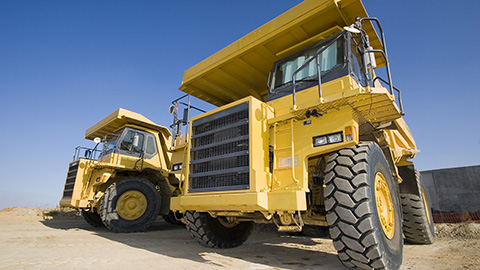Composites: The Future of Lasting Building Materials
Composites: The Future of Lasting Building Materials
Blog Article
Checking Out the Uses and Advantages of Recycled Composites in Modern Industries
The combinations of recycled materials with innovative composite modern technologies provides an appealing method for improving sustainability, strength, and cost-efficiency throughout various industries. As markets look for ingenious remedies to address environmental concerns and improve operational efficiencies, the consolidation of recycled composites emerges as a compelling choice.
Environmental Advantages of Recycled Composites
The application of recycled composites in contemporary industries supplies considerable environmental benefits, adding to the decrease of waste and the preservation of all-natural sources. By incorporating recycled compounds right into making procedures, industries can lower their dependence on virgin products, thereby minimizing the quantity of waste produced and the energy required for removal and production. This shift towards making use of recycled compounds assists in diverting products from land fills, alleviating the burden on waste monitoring systems, and decreasing greenhouse gas discharges linked with traditional production methods.
Moreover, the use of recycled composites promotes the preservation of natural deposits such as timber, minerals, and water, which are usually depleted with the extraction and handling of resources (composites). By extending the life-span of products via recycling, markets can help maintain ecological communities and biodiversity by reducing the need for brand-new resources. On the whole, the fostering of recycled composites in modern-day markets plays a vital role in advertising sustainability and reducing the ecological impact of production procedures
Enhanced Durability in Item Manufacturing
With a concentrate on longevity and effectiveness, integrating recycled compounds into item manufacturing procedures enhances longevity and sustainability. By using recycled compounds, producers can develop products that are not just strong however additionally resistant to damage, making them optimal for long-term usage in different sectors. The mix of different materials in recycled compounds can often lead to boosted strength and longevity compared to conventional materials, giving a cost-effective option for generating long-lasting goods.
Among the vital advantages of using recycled composites in item production is the capability to customize the product residential properties to fulfill specific sturdiness demands. By readjusting the make-up and production techniques, producers can personalize the recycled compounds to hold up against harsh environmental conditions, heavy tons, or regular usage without jeopardizing on efficiency. This versatility in design and manufacturing permits the production of very long lasting items that preserve their stability gradually, minimizing the requirement for regular substitutes and eventually adding to a much more sustainable manufacturing process.
Cost-Effectiveness and Economic Benefits
Including recycled composites right into item manufacturing not just enhances durability and sustainability however additionally offers considerable cost-effectiveness and economic advantages. Using recycled compounds can lead to decreased material costs as recycled products are often more economical than virgin materials. In addition, reusing composite products can decrease waste disposal costs and lower the need for landfill space, contributing to general price savings for industries.

Development and Design Adaptability With Recycled Composites
Utilizing recycled compounds in contemporary industries offers unrivaled possibilities for technology and layout versatility. By incorporating recycled products into composite production processes, firms can push the limits of conventional layout restraints and check out brand-new opportunities. The adaptability of recycled compounds enables the production of complicated forms and structures that could not be attainable with standard materials.
Among the essential benefits of recycled composites is their capacity to be molded right into different kinds, giving developers the freedom to experiment with unique shapes and dimensions. composites. This flexibility opens a globe of creative possibilities, allowing the growth of lightweight yet long lasting items that meet the certain needs of different sectors
Furthermore, making use of recycled compounds promotes lasting techniques and supports the circular additional resources economic situation by reducing waste and lessening the ecological impact of producing procedures. This resource focus on environment-friendly layout options straightens with the expanding trend towards sustainability in contemporary industries, making recycled composites a useful source for cutting-edge and forward-thinking companies.
Applications Across Numerous Industries
Recycled compounds locate impactful and varied applications throughout a variety of markets as a result of their one-of-a-kind residential properties and sustainability benefits. In the auto sector, these materials are progressively utilized for producing lightweight and resilient elements, improving fuel effectiveness and decreasing carbon discharges. The aerospace market gain from recycled composites in the production of airplane components, where the materials' strength-to-weight ratio is critical for ensuring safety and security and efficiency. In building, these composites are made use of for producing solid yet environment-friendly structure materials, adding to sustainable infrastructure development. The renewable resource field employs recycled compounds in wind generator blades and solar panels, harnessing their toughness and resistance to extreme environmental conditions. Additionally, the aquatic industry makes use of these products for producing boat hulls and components, supplying enhanced durability and deterioration resistance. The adaptability and sustainability of recycled compounds make them useful across different industries, driving innovation and ecological stewardship. composites.
Conclusion
Finally, the utilization of recycled composites in modern-day industries uses significant environmental advantages, enhanced longevity in product production, cost-effectiveness, and economic advantages. In addition, the use of recycled composites enables browse around this web-site innovation and style flexibility across different markets. In general, the adoption of recycled composites provides a sensible and lasting remedy for meeting the requirements of the market while additionally minimizing ecological influence.

One of the key advantages of making use of recycled compounds in item manufacturing is the ability to customize the material properties to fulfill certain sturdiness requirements. Making use of recycled composites can lead to minimized material prices as recycled products are frequently much less costly than virgin materials. The aerospace market benefits from recycled compounds in the production of airplane parts, where the products' strength-to-weight proportion is critical for making certain security and performance.
Report this page